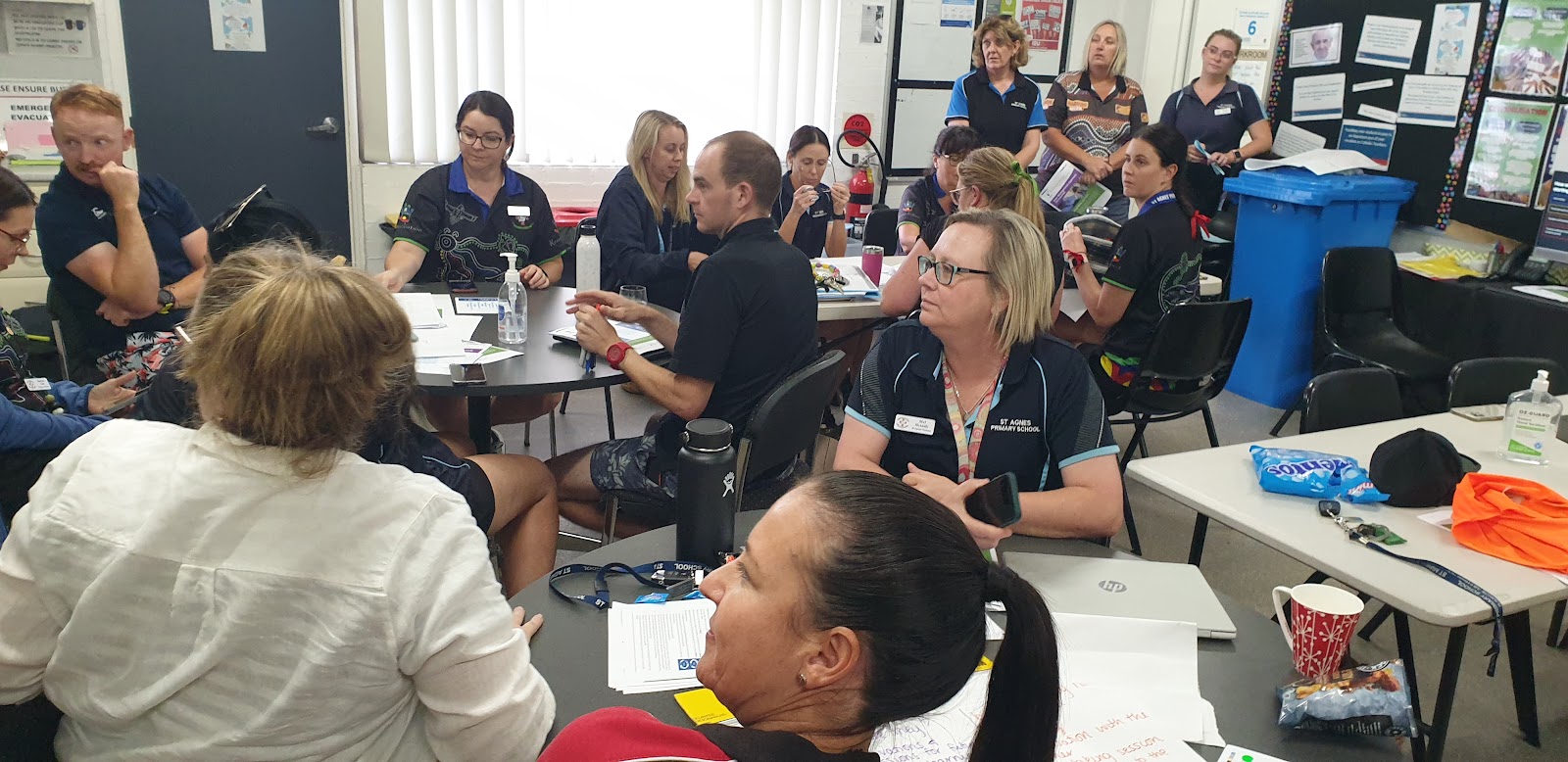Cohort 1 Sharing
Coraki's presentation highlighted a real connection between staff and the learning resources. Their students could articulate where they were in their learning and where they needed to go next. They utilized the Bump It Up wall to help with this articulation. Both teachers and teacher assistants' voices and expertise were clearly heard in the Case Management Meetings. The team reflected on what they are doing differently as a result of the Collaborative work. In particular they mentioned how Learning Intentions and Success Criteria are constantly referred to and how these are co-constructed (no longer teacher driven) deepening their students' understanding of expectations and building authentic ownership. The challenges faced by the team included the mindset of others, especially in regards to the 'time it was taking' to build and maintain momentum but also the up-skilling of staff who hadn't been part of all the learning. Frequent whole school reviews of progress and allocated time for professional learning was mentioned as beneficial. Lyn offered advice around using a co-teacher model, letting each other know/declare what they want to refine in their practice so that others could mirror. She emphasised the need to start every conversation with data (albeit from learning walks and talks or Case Management Meetings), ensuring we stay consistent, persistent and insistent remembering how we spend our time is important!
Skennar's Head shared their celebrations next. They were using the waterfall assessment chart to inform their success criteria generation and using this criteria to help with meaningful feedback and deep self assessment. Every PLT started with a Case Management Meeting and their learning walks and talks only looked at learning intentions, success criteria and use of the third teacher. Their plan moving forward for Semester Two was to ask the five critical questions. Lyn's advice to move learning walks and talks forward was to use 'ghost walks.' These are walks when students are not there and have pairs/triads leave post-it notes on evidence they find. These post-it notes should start with 'warm fuzzies' to be growth promoting. She encouraged Skennar's Head to share their celebrations with their parent community. It was during this presentation that our team tuned into the idea of 'anonymous' bump it up walls that display exemplars (as opposed to a continuum) that include 1-2 piece of work that all students can achieve/identify with. We were cautioned with the idea of students placing themselves on the wall. Although helpful for goal setting, using the wall like this could potentially turn it into a student data comparison tool and not a resource used by students. Bump It Up Walls allow students to be evaluators of themselves - How will they move themselves? It became clear also that Case Management Meetings were about the 'teacher' not the 'student.' In other words, focusing on what instruction was needed to get the student to improve.
South Lismore shared the value in learning skills such as 'reading the room' and inferring what staff are saying/doing in order to plan their next steps of professional learning and feedback. In order to build teacher ownership of the new direction they looked for 'quick' and 'long term' wins. Learning from each other was seen as the most powerful professional learning where teachers were almost 'teaching' each other. For us, we thought about how the school had gone back to 'test' Parameter 14 (especially if there was a change over of staff) and the way in which they tried to differentiate teacher support. We also could see how the team clearly had a clear system in place for those re-occurring students coming into Case Management Meetings. Good first teaching would be brainstormed, selected, tried and if after another three meetings were had and there was no improvement the child would be referred to the Additional Needs for the intervention process to begin. Early intervention after everything and everyone had already been exhausted.




Comments
Post a Comment